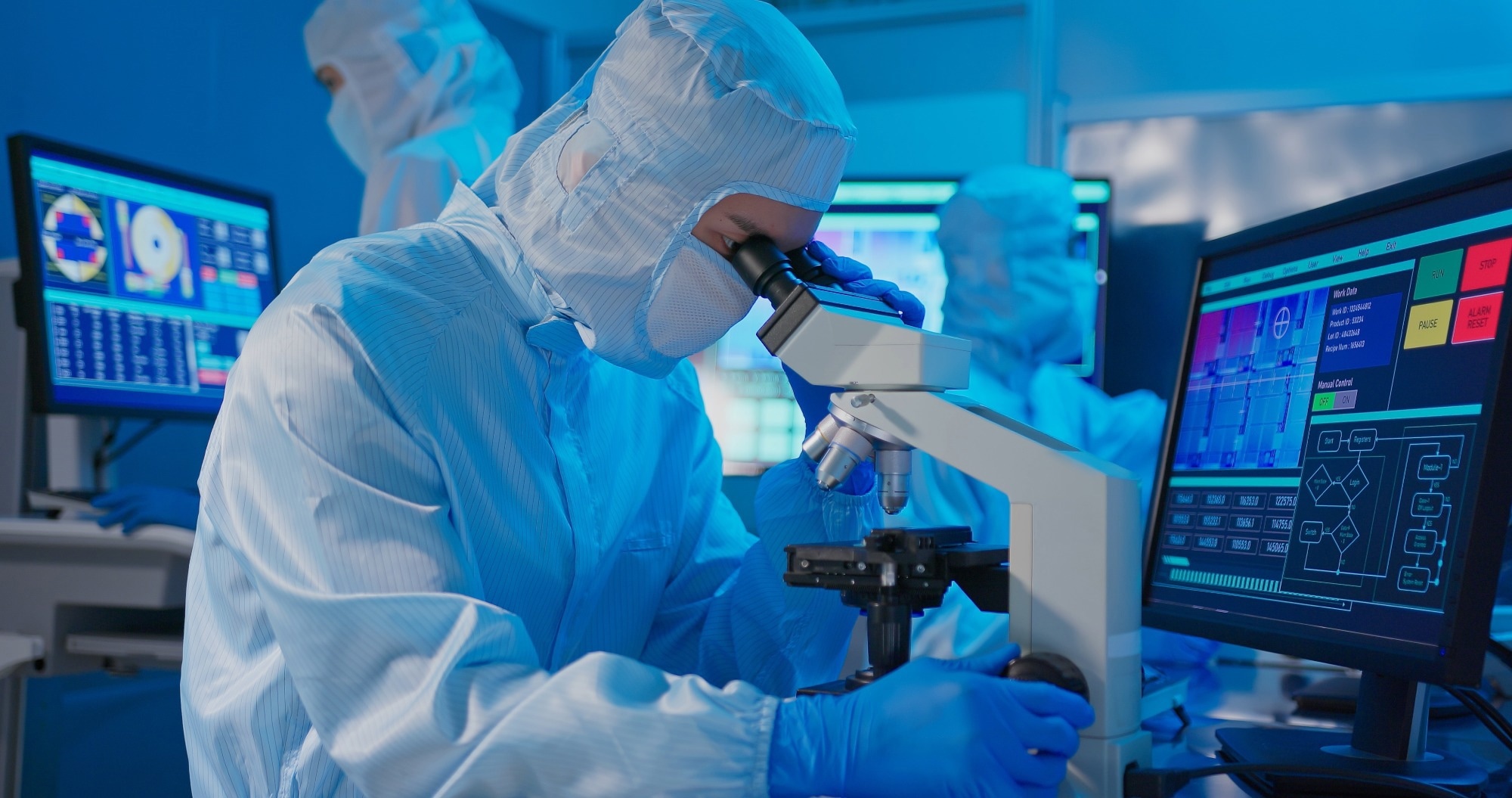A recent article in Nature Communications describes the direct observation of core–shell metallic nanowire growth using advanced imaging techniques. These methods enable visualization of atomic-scale processes in colloidal environments, minimizing interference from ligands or organic components.
 Image Credit: aslysun/Shutterstock.com
Image Credit: aslysun/Shutterstock.com
Background
Previous theoretical models of nanocrystal growth typically involve classical two-step or multi-stage mechanisms, including nucleation, monomer addition, and particle fusion. These models are often derived from static or ex situ characterizations, which provide limited information about real-time structural evolution.
Recent advances in in situ imaging—particularly liquid-phase transmission electron microscopy (LPTEM)—have allowed researchers to observe nanocrystal formation in solution at high resolution.
These studies have identified a variety of mechanisms, including heterogeneous and homogeneous nucleation, nanoparticle attachment, and surface processes such as Ostwald ripening.
These factors collectively influence nanowire shape and size. Additional parameters such as surface energy, interfacial tension, and metal reactivity further affect whether particles merge into uniform shells or irregular structures.
Growth orientation, especially along the low-energy 〈111〉 direction, has been shown to dominate for noble metals like gold and silver. However, the detailed kinetics of metal deposition, the role of mixed-metal systems, and the impact of experimental conditions such as temperature and reducing agents have remained incompletely characterized.
The Current Study
The researchers used a combination of low-dose LPTEM, cryogenic transmission electron microscopy (cryo-TEM), and three-dimensional electron tomography to observe nanowire growth in liquid conditions that simulate colloidal synthesis.
The study involved alloy seed nanowires—both chiral and non-chiral—as substrates for depositing metals, including gold (Au), platinum (Pt), palladium (Pd), iron (Fe), copper (Cu), and nickel (Ni).
Metal deposition was initiated using chemical precursors and reducing agents such as sodium borohydride, hydrazine hydrate, and ascorbic acid under controlled synthesis conditions. These parameters were selected to resemble standard colloidal procedures while enabling real-time imaging of growth dynamics.
The imaging focused on distinct growth phases—nucleation, attachment, coalescence, and surface restructuring. Electron tomography provided three-dimensional reconstructions, while techniques such as energy-dispersive X-ray spectroscopy (EDS) and scanning transmission electron microscopy (STEM) confirmed composition and structure.
Variations in metal type, temperature, and reducing agent were systematically introduced to assess their effects on deposition pathways.
Results and Discussion
The study found that core–shell nanowire formation generally proceeds through three main stages. Initially, metal atoms preferentially nucleate on seed nanowires through heterogeneous nucleation, which requires a lower energy barrier than nucleation in solution. This results in the formation of a thin, uniform initial shell.
As the reaction continues, additional metal nanoparticles nucleate in the solution and migrate to the nanowire surfaces. These particles attach in a manner influenced by surface energy considerations and often align along crystallographic directions such as 〈111〉. Following attachment, particles may coalesce, forming either smooth shells or more irregular, knot-like features, depending on metal properties and synthesis conditions.
Ostwald ripening played a significant role in noble metal systems (Au, Ag, Pd, Pt), promoting the growth of larger particles and contributing to surface reconstruction. In contrast, transition metals such as Fe, Ni, Cu, and Ru exhibited reduced ripening effects, likely due to lower atomic mobility and surface energy mismatches.
Morphologies ranged from continuous, smooth coatings to irregular, rough surfaces, shaped by the metal species and the processing environment. Noble metals tended to form more homogeneous shells, while transition metals showed slower coalescence and more varied surface features.
Download your PDF copy now!
Conclusion
This study provides detailed insight into the growth mechanisms of core–shell nanowires under colloidal conditions. By identifying how metal type, crystallographic orientation, and reaction conditions influence deposition behavior, the research contributes to a more refined understanding of nanowire formation.
These results may inform the design of nanowires with tailored surface properties for applications in catalysis, electronics, and energy storage. The integration of real-time imaging with controlled synthesis offers a framework for further studies aimed at manipulating nanoscale structures with greater precision.
Journal Reference
Yang D., et al. (2025). Observation of nanoparticle coalescence during core-shell metallic nanowire growth in colloids via nanoscale imaging. Nature Communications. DOI: 10.1038/s41467-025-60135-3, https://www.nature.com/articles/s41467-025-60135-3